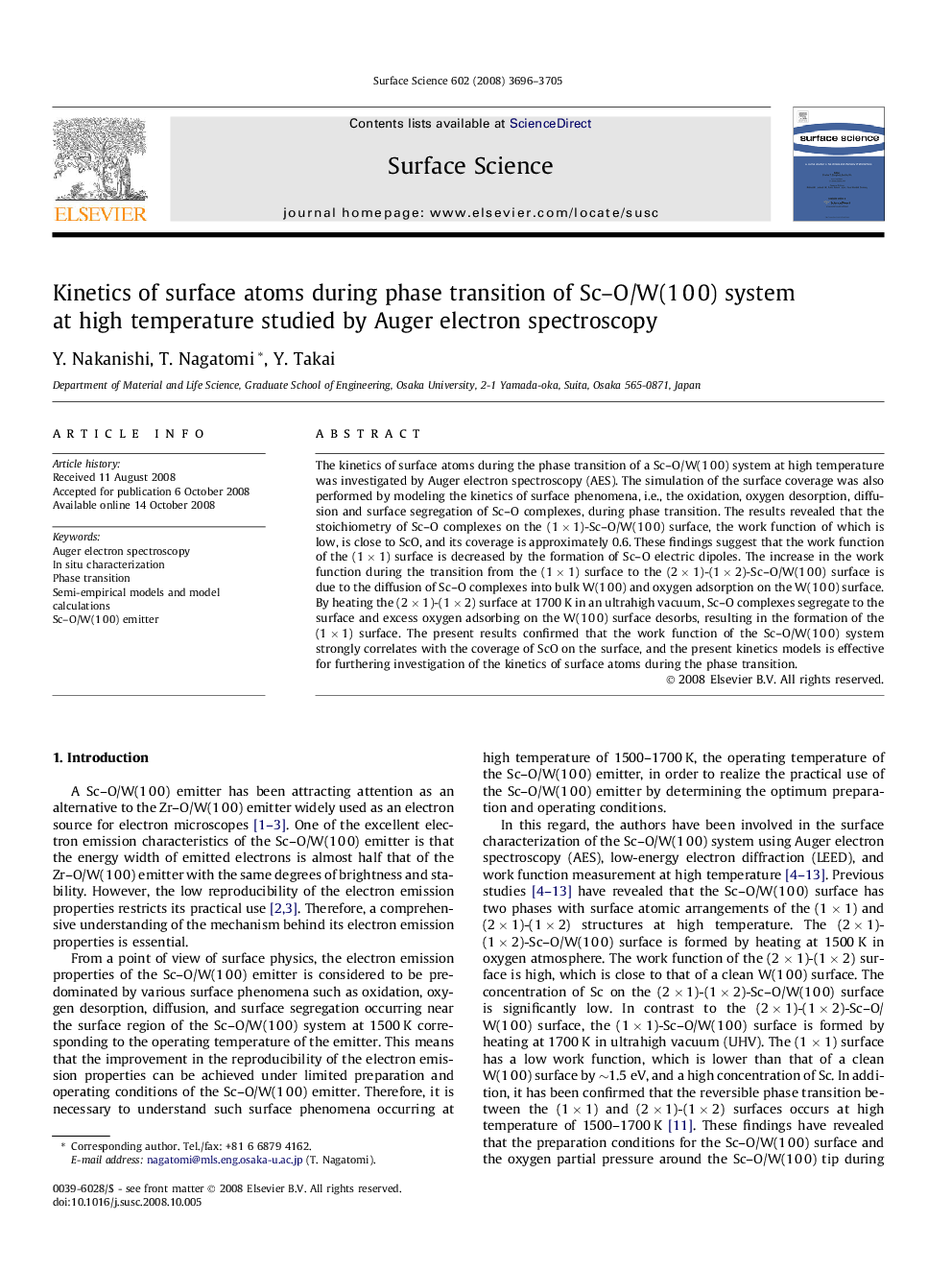| Article ID | Journal | Published Year | Pages | File Type |
|---|---|---|---|---|
| 5424390 | Surface Science | 2008 | 10 Pages |
Abstract
The kinetics of surface atoms during the phase transition of a Sc-O/W(1Â 0Â 0) system at high temperature was investigated by Auger electron spectroscopy (AES). The simulation of the surface coverage was also performed by modeling the kinetics of surface phenomena, i.e., the oxidation, oxygen desorption, diffusion and surface segregation of Sc-O complexes, during phase transition. The results revealed that the stoichiometry of Sc-O complexes on the (1Â ÃÂ 1)-Sc-O/W(1Â 0Â 0) surface, the work function of which is low, is close to ScO, and its coverage is approximately 0.6. These findings suggest that the work function of the (1Â ÃÂ 1) surface is decreased by the formation of Sc-O electric dipoles. The increase in the work function during the transition from the (1Â ÃÂ 1) surface to the (2Â ÃÂ 1)-(1Â ÃÂ 2)-Sc-O/W(1Â 0Â 0) surface is due to the diffusion of Sc-O complexes into bulk W(1Â 0Â 0) and oxygen adsorption on the W(1Â 0Â 0) surface. By heating the (2Â ÃÂ 1)-(1Â ÃÂ 2) surface at 1700Â K in an ultrahigh vacuum, Sc-O complexes segregate to the surface and excess oxygen adsorbing on the W(1Â 0Â 0) surface desorbs, resulting in the formation of the (1Â ÃÂ 1) surface. The present results confirmed that the work function of the Sc-O/W(1Â 0Â 0) system strongly correlates with the coverage of ScO on the surface, and the present kinetics models is effective for furthering investigation of the kinetics of surface atoms during the phase transition.
Keywords
Related Topics
Physical Sciences and Engineering
Chemistry
Physical and Theoretical Chemistry
Authors
Y. Nakanishi, T. Nagatomi, Y. Takai,
